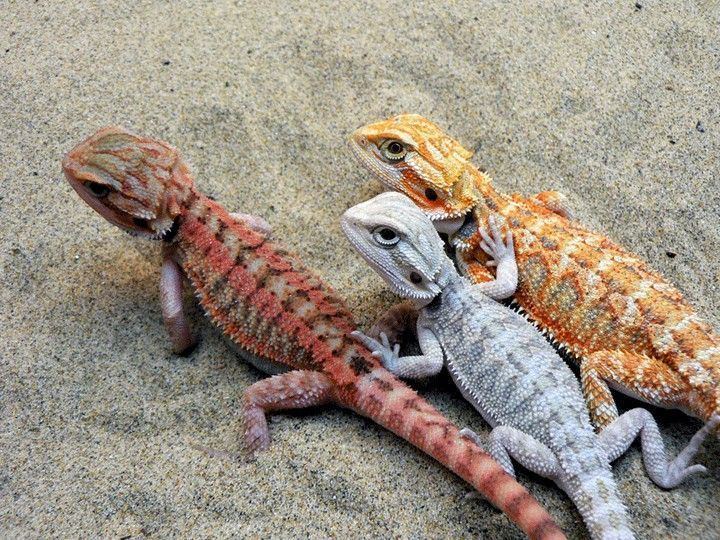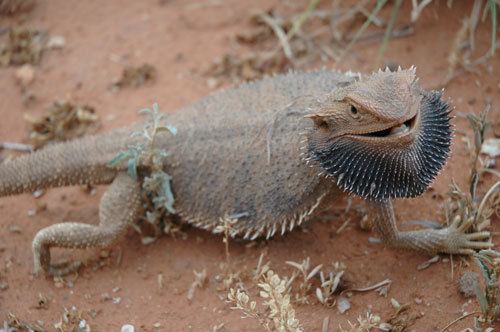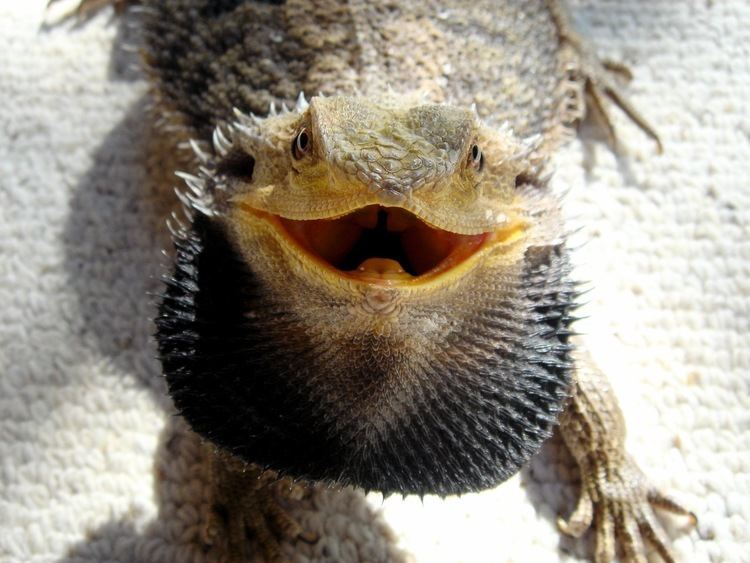Family Agamidae Scientific name Pogona Order Scaled reptiles Rank Genus | Suborder Iguania Higher classification Agaminae | |
 | ||
Mass Central bearded dragon: 280 – 510 g Lower classifications Central bearded dragon, Rankin's dragon, Eastern bearded dragon, Pogona minor | ||
pogona vitticeps fiche d levage
Pogona is a genus of reptiles containing eight lizard species, which are often known by the common name bearded dragons. The name "bearded dragon" refers to the "beard" of the lizard, the underside of the throat which turns black if they are stressed or see a potential rival. They are adept climbers, spending time on branches and in bushes and near human habitation. Pogona species bask on rocks and exposed branches in the mornings and afternoons. They are found throughout much of Australia in a wide range of habitats such as deserts, shrublands and Eucalyptus woodlands.
Contents
- pogona vitticeps fiche d levage
- Tuto fabrication terrarium serpent lezard pogona sauromalus etc
- Description
- Habitat
- Behavior
- Species
- In captivity
- Captive diet
- Color variations
- Special lighting
- References

Several species of this genus, especially the central bearded dragon, are often kept as pets or exhibited in zoos due to their hardy nature and easy care in comparison to other exotic reptiles. Some are incredibly smart and good natured.

Tuto fabrication terrarium serpent lezard pogona sauromalus etc
Description

The genus Pogona is in the subfamily Amphibolurinae of the lizard family Agamidae. Characteristics include broad, triangular heads and flattened bodies with spiny scales arranged in rows and clusters. These are found on the throat, which can be expanded when threatened, and at the back of the head. These scales are used to scare off predators, yet they are not very sharp. Bearded dragons display a hand-waving gesture to show submission, and a head-bobbing display to show dominance between dragons. They have the ability to change color during rivalry challenges between males, in response to ambient temperature changes such as turning black to absorb heat, and other stimuli. Males grow up to 60 cm (24 in) long, and females up to 51 cm (20 in). Bearded dragons also produce a mild venom originating from primitive venom glands. Although generally harmless towards humans, it is effective towards smaller-sized animals.
Habitat

Bearded dragons originate from central Australia, where they live in the arid and subtropical woodlands, scrublands, savannas, shore areas, and into the great interior deserts. Their range extends throughout the interior of the eastern states to the eastern half of South Australia and southeastern Northern Territory. They spend most of their time in bushes and trees, and will often bask on rocks. When the climate is too hot they will often burrow underground.
Behavior

Adult bearded dragons are very territorial. As they grow, they establish social hierarchies in which displays of aggression and appeasement form a normal part of their social interactions. The beard is used for both mating and aggression displays. Both sexes have a beard, but males display more frequently, especially in courtship rituals. Females will, however, display their beard as a sign of aggression also. The beard darkens, sometimes turning jet black and inflates during the display. The bearded dragon may also open its mouth and gape in addition to inflating its beard to appear more intimidating. Head bobbing is another behavior and it can be seen in both females and males; they quickly move their head up and down, often darkening and flaring their beard. They do this to show dominance over smaller males, weaker males, if a male wants to mate with a female or other animals they feel threatened by. Another behavior is arm waving, done by both males and females. Standing on 3 legs the bearded dragon would lift one of its front legs and move it in a circular motion. Arm waving functions as species recognition, and it is a sign of submission. Smaller males will often respond to larger males by arm waving. Females will also arm wave to avoid male aggression, often in response to a male's head bobbing. They are relatively smart for a reptile.
Species
The following eight species are recognized as being valid.

Nota bene: A binomial authority in parentheses indicates that the species was originally described in a genus other than Pogona.
In captivity
Bearded dragons—most commonly, the inland or central bearded dragon (sometimes Rankin's bearded dragon)—are kept as pets. Introduced as pets to the US during the 1990s, they are a popular exotic species pet even though Australia, from the 1960s onward, has banned the sale of its wildlife to the pet trade. They are a popular species among children because of their friendly and calm nature, and the relative ease of caring for them. Generally speaking, the bearded dragon is a solitary animal. Male bearded dragons are usually housed alone, as they will fight with other males and breed with females. Captive adults reach about 40 to 61 cm (16 to 24 in) from head to tail, weigh 350 to 600 g (10 to 20 oz) and live for about 8 to 12 years with good care. They can live up to a maximum of 14 years in captivity.
Captive diet
Juvenile and baby bearded dragon diets consist mainly of insects. A juvenile bearded dragon eats insects three times a day on average. The amount of insects they eat depends on the dragon itself and how much it can eat. Crickets are the most popular insects fed to bearded dragons, but they can also be fed other insects such as black soldier fly larvae, locusts, superworms, waxworms, silkworms, butterworms, fruit flies, grasshoppers and hornworms. Bearded dragons also eat increasing amounts of plant based food as they grow; adults should have a diet consisting of more than 60% plant matter, the most important of which is leafy greens.
Color variations
Color variations of the inland, or central, bearded dragon are often available from breeders. The different colors of bearded dragons display subtle differences between them and 'wild' type dragons. For example, the color of the beards may be orange or yellow, and golden brown to near black in 'wild' type dragons.
Special lighting
Bearded dragons require UVB to help enable D3 synthesis and to prevent metabolic bone disease. Bearded dragons also require UVA—this wavelength of light stimulates feeding, breeding, basking and overall health.
